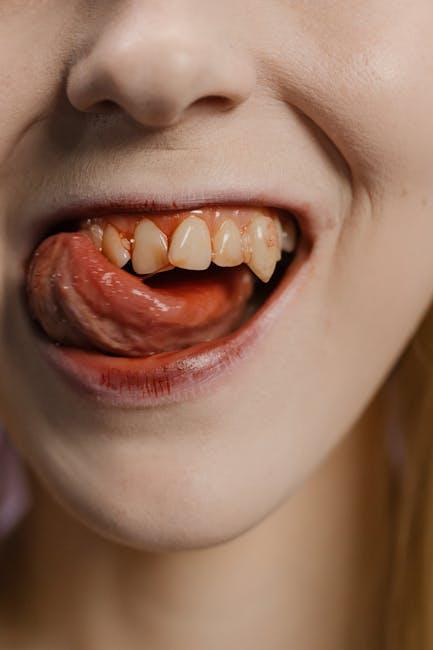
Predicting the Response of Dental Pulp to SARS-CoV-2 Infection: A Transcriptome-Wide Effect Cross-Analysis – Nature
The COVID-19 pandemic, caused by the SARS-CoV-2 virus, has transformed not only respiratory medicine but has also brought the dental and oral health fields under new scrutiny. Recent cutting-edge scientific research published in Nature explores how the dental pulp—the innermost part of the tooth—responds to SARS-CoV-2 infection through a comprehensive transcriptome-wide effect cross-analysis. This groundbreaking study opens new doors to understanding oral tissue susceptibility to this virus and its impacts on oral health.
Understanding the Dental Pulp and Its Importance
The dental pulp contains nerves, blood vessels, and connective tissue that keeps the tooth alive and functioning. It plays key roles in:
- Immune response to pathogens
- Repair and regeneration of tooth structure
- Pain signaling and sensitivity detection
Given its complex biological activity, the dental pulp’s reaction to viral infections like SARS-CoV-2 is critical in assessing potential oral manifestations of COVID-19.
What Is Transcriptome-Wide Effect Cross-Analysis?
This specialized analysis involves studying how gene expression changes across an entire genome—in this case, within dental pulp tissue—when exposed to SARS-CoV-2 infection. Transcriptome sequencing (RNA-seq) helps researchers identify which genes are upregulated or downregulated, revealing biological pathways activated or suppressed by the virus.
Key features of transcriptome-wide effect cross-analysis include:
- Simultaneous examination of thousands of genes
- Identification of critical immune and inflammatory pathways
- Potential insights into tissue-specific viral effects
- Cross-comparison with other tissues impacted by COVID-19
Findings from the Nature Study
The study published in Nature utilized advanced bioinformatics and transcriptomic data from dental pulp samples exposed to SARS-CoV-2, revealing several important responses:
- Upregulation of antiviral defense genes: The dental pulp showed increased expression of interferon-stimulated genes (ISGs) indicating an active antiviral response.
- Inflammatory cytokine activation: Markers such as IL-6 and TNF-α, key cytokines involved in inflammation, were elevated, signifying potential pulpitis-like responses.
- Disruption of cellular homeostasis: Genes related to apoptosis and cell survival were differentially expressed, suggesting pulp cell stress during infection.
- Potential for ACE2 receptor involvement: ACE2 receptor, the known entry point for SARS-CoV-2, was found expressed in pulp tissue, supporting the hypothesis that dental pulp can be directly affected.
Summary of Gene Expression Changes in Dental Pulp During SARS-CoV-2 Infection
| Gene Category | Expression Change | Biological Implication |
|---|---|---|
| Interferon-Stimulated Genes (ISGs) | Upregulated | Antiviral defense activation |
| Pro-Inflammatory Cytokines (IL-6, TNF-α) | Upregulated | Inflammation and immune response |
| Apoptosis Markers | Variable (up/down) | Cell stress and death regulation |
| ACE2 Receptor | Present | Potential viral entry site |
Implications for Dental Practice and Oral Health
These findings carry significant importance for dental professionals and patients alike. Understanding the dental pulp’s response to SARS-CoV-2 highlights potential clinical considerations:
- Recognition of COVID-19-related dental pain: Pulpal inflammation triggered by viral presence might mimic or worsen pulpitis, requiring new diagnostic awareness.
- Risk of viral persistence in oral tissues: Since the pulp can harbor viral RNA, there might be implications for viral shedding and oral transmission.
- Potential treatment adjustments: Anti-inflammatory or antiviral strategies may become relevant adjuncts in dental care for COVID-19-infected individuals.
- Reinforcement of oral hygiene: Maintaining pulp health via good oral hygiene practices may reduce susceptibility to viral impacts.
- Screen patients rigorously for COVID-19 symptoms before invasive pulp treatments.
- Use high-volume suction and protective barriers to minimize aerosolized viral particles during procedures.
- Stay informed on emerging research linking systemic viral infections to oral tissue health.
- Incorporate anti-inflammatory patient education focusing on pulp and oral tissue care.
Case Study: Transcriptomic Insights in a COVID-19 Positive Patient’s Dental Pulp
One notable case involved a patient diagnosed positive for COVID-19 prior to presenting with severe tooth pain. Transcriptomic analysis of the extracted pulp tissue from this patient revealed:
- Marked increase of antiviral gene expression, consistent with systemic infection response.
- Elevated cytokine levels suggestive of localized inflammation aligned with clinical symptoms.
- Expression of ACE2 receptors, reinforcing the hypothesis of direct viral pulp involvement.
This case underscores the necessity for dentists to consider COVID-19’s possible effects during diagnosis.
Future Directions and Research Opportunities
While this transcriptome-wide effect cross-analysis presents a significant advancement, ongoing research is needed to:
- Elucidate the long-term effects of SARS-CoV-2 on dental pulp function and regeneration.
- Explore possible viral reservoirs in oral tissues and implications for reinfection or persistence.
- Develop targeted therapies to mitigate pulp damage during COVID-19 infections.
- Expand transcriptomic analyses to larger patient cohorts for broader generalizability.
Conclusion
The Nature study on predicting the dental pulp’s response to SARS-CoV-2 infection using transcriptome-wide effect cross-analysis provides compelling insights into how oral tissues interact with this novel virus. The identification of key gene expression changes, inflammatory responses, and viral receptor presence offers dentists and researchers new perspectives on COVID-19’s oral impacts. Embracing these findings can lead to improved dental care protocols, enhanced patient outcomes, and a better understanding of the oral-systemic viral relationship.
As the pandemic continues to evolve, integrating transcriptomic research into dental science will remain a vital area of study, ultimately benefiting oral health worldwide.
“A deeper knowledge of viral effects on dental tissues can help bridge the gap between systemic illness and dental health, fostering a holistic approach to patient care.” – Leading Dental Researcher


